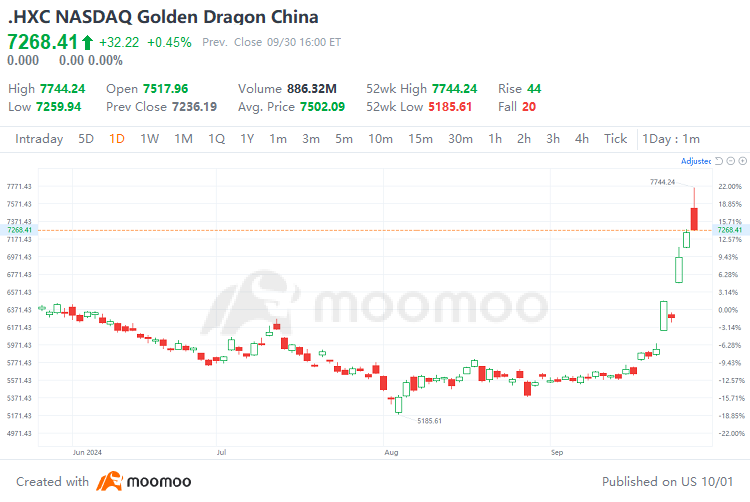In the last week of September, the Chinese stock market experienced a strong rebound, with Chinese assets globally rising across the board. From September 23 to September 30, the Hang Seng Index rose by 15.75%, and the Nasdaq Golden Dragon China Index increased by 24.5%, significantly outperforming global markets. Among the top ten Chinese stocks in terms of gains over the past five trading days were Lexin (LX), Lufax Holding (LU), Dada Group (DADA), Bilibili (BILI), TAL Education (TAL), Up Fintech (TIGR), Gaotu (GOTU), Noah Holdings (NOAH), JinkoSolar (JKS), and Boss Zhipin (BZ), with increases ranging from 36.37% to 62.87%, showcasing impressive performance.


102869948coco : I feel like I can't move forward recently.
547688699 102869948coco : Already flushed.
Bird007 102869948coco : Just getting started.
104860590 102869948coco : Have you been surprised today?
102869948coco 104860590 : I have taken partial profits and fear high prices.
Doditty 102869948coco : If you zoom out these prices are low. You’re scared for no reason and shouldn’t be trading
102869948coco Doditty : 只是一小部分,因为有46 %的盈利了
LookJock : You are also a leek.
LookJock Bird007 : After the festival, be ready to be harvested like leeks.
102869948coco Doditty : 稳妥点比较好
View more comments...